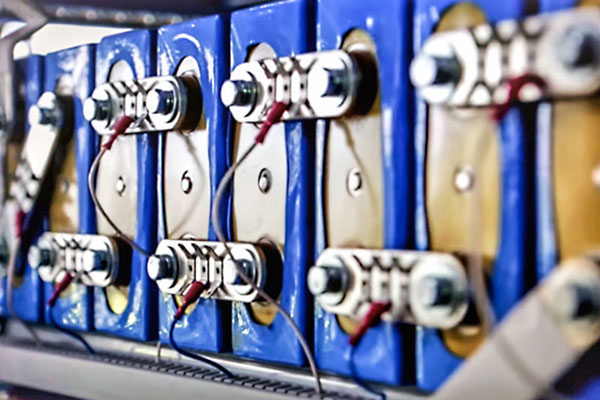Lithium Ion Battery Development

For further information and pricing, please get in touch with us.
Modern electronic devices demand high-performance energy storage solutions that can satisfy their high-power demands with greater efficiency and in a compact format.
Researchers recognised the potential of lithium ion (Li-ion) batteries due to their excellent power density, lightweight format, and recharging capabilities.
Related Products
Despite warranting a Nobel Prize for Chemistry due to the technical advancements offered by Li-ion technology, continued lithium ion battery development is ongoing.
Hiden Analytical is one of the UK’s foremost suppliers of precision mass spectrometers for academic, commercial, and industrial areas of application. We have likewise recognised the potential of Li-ion technology to play a key role in future power revolutions. Consequently, we have provided high-tech electrochemical gas analysis systems for next-generation lithium ion battery development.
The EQS spectrometer provides SIMS detection for focused ion beam (FIB) microscopes, with excellent sensitivity for light elements (sub ppm sensitivity for lithium). The primary focussed ion beam of the FIB microscope scans the surface of the sample and the EQS detector obtains the ejected secondary ions with a high dynamic range of up to six orders of magnitude. This enables the system to generate high resolution nanoscale depth composition profiles through secondary ion sputtering of the elements and compounds, with enhanced lateral resolution of 50 nm.
Hiden LAS – Automated High Throughput Leak Analysis System is designed to analyze the leak rate from sealed packages, such as lithium ion batteries, from a quality control or research and development perspective. A variety of fill gases and impurities can be analyzed. The automated system provides a pass/fail analysis based on the specified leak rate minimum.
Characterising Gas Evolutions in Li-Ion Batteries
Active lithium ion battery development primarily focusses on three key performance areas: controlling temperature, improving power density, and reducing recharge degradation.
A prototypical li-ion battery comprises a cell with two separated compartments, one containing lithium-metal carbon in an electrolytic suspension and the other containing lithium metal oxides. The entire thing is sandwiched between a copper anode and an aluminium cathode. Reactions occurring within the cell are air-sensitive, which can complicate analysis of gas evolutions – an important process for ongoing research and development (R&D).
At Hiden Analytical, we have developed a range of in-line mass spectrometry solutions that can couple directly to the metallic electrode of a Li-ion battery. We can also provide a customized glovebox interface for setups where the gas analyser cannot be incorporated into the air-free environment. Our unique mass spectrometry solutions are ideal for lithium ion battery development studies. If you would like to learn more, contact a member of the team today.
Mass Spectrometers for Electrochemistry Applications
Sampling Inlets for Hiden Mass Spectrometers: Gas, Vapour and Liquid Sampling Systems
Integration of BioLogic Potentiostat with Hiden HPR-40 DEMS Mass Spectrometer
Summary of DEMS Cells and Sampling Interfaces for Electrochemistry Applications – TI-20022.2
Uncovering LiH Triggered Thermal Runaway Mechanism of High-Energy LiNi0.5Co0.2Mn0.3O2/Graphite Pouch Cell 2.89 MB 44 downloads
Uncovering LiH Triggered Thermal Runaway Mechanism of High-Energy LiNi0.5Co0.2Mn0.3O2/Graphite...- 1
- 2

